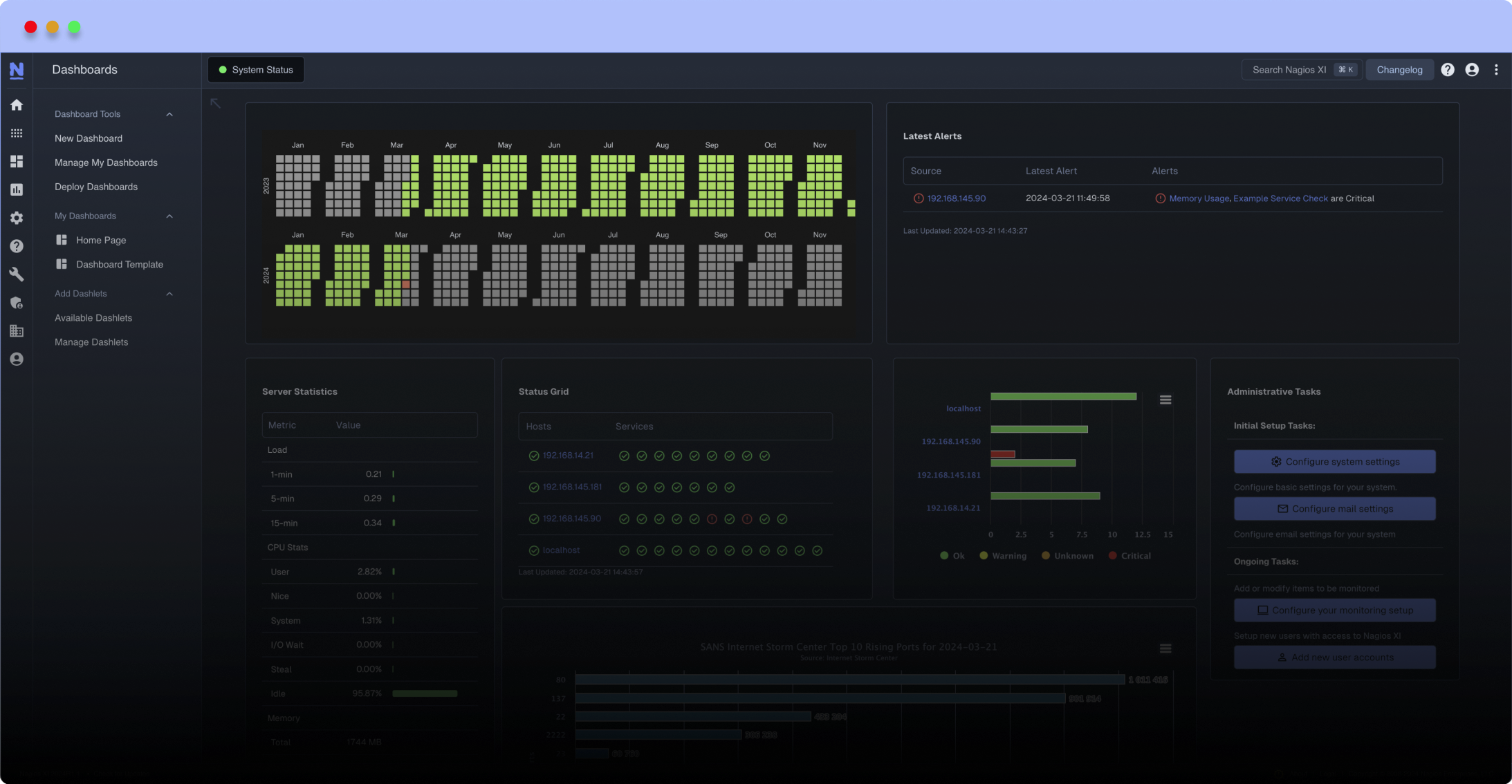Search Exchange
Search All Sites
Nagios Live Webinars
Let our experts show you how Nagios can help your organization.Login
Directory Tree
Nimble Storage Replication Health API Check Script
Current Version
1.0
Last Release Date
2020-01-17
Compatible With
- Nagios XI
Owner
License
GPL
Hits
5302
Files:
| File | Description |
|---|---|
| check_nimble_repl_api.py | check_nimble_repl_api.py |
Meet The New Nagios Core Services Platform
Built on over 25 years of monitoring experience, the Nagios Core Services Platform provides insightful monitoring dashboards, time-saving monitoring wizards, and unmatched ease of use. Use it for free indefinitely.
Monitoring Made Magically Better
- Nagios Core on Overdrive
- Powerful Monitoring Dashboards
- Time-Saving Configuration Wizards
- Open Source Powered Monitoring On Steroids
- And So Much More!
The script makes use of the Nimble Storage API, it is recommended to create a read-only account on the Nimble Storage array(s), this can be AD/LDAP or local.
The script is written in Python 2.7, check the shebang line at the start of the file to ensure the path to your interpreter is correct.
Example usage:
./check_nimble_repl_api.py -e https://array.domain.co.uk:5392 -u username -p password -c theshold(in seconds)
Within NagiosXI configuration you can use the -e as an argument and enter the URL as written, NagiosXI appears to deal with the escapes correctly.
You may need to put the password in single quotes (if it contains weird characters).
There is a debug mode, add "-d" to the end of the command string for more detailed output for troubleshooting operation of the script, this is best run from the command line of the NagiosXI server.
Reviews (0)
Be the first to review this listing!


 New Listings
New Listings